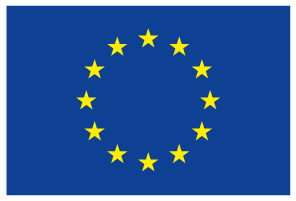Renewable heating and cooling for a hospital
Share

The Severo Ochoa Hospital facility buidling in Madrid is a very common urban tertiary building with local district heating and cooling infrastructure and has great replication potential.
The Hospital currently has a local network to supply all the buildings with heating and cooling. The central heating and cooling production system is formed by:
Heating plant: 3 natural gas boilers, 3*1.85 MW that started to work in April 2019, substituting 3 diesel boilers
Cooling plant: 4 water-water electric chillers, 4*1.14 MW capacity
Cooling towers: 3 x 2 MW capacity.
The distribution system is formed by the primary and secondary pipelines, that distribute hot and cold water through the building complex.
Technology
The objective is to demonstrate an advanced solution based on heat recovery from a cooling production process. The demonstrator will recover low temperature heat from the cooling circuit of the water-water electric chillers. Currently, this heat is dissipated through the cooling towers. The booster heat pump will capture the heat from the outlet water of the chiller cooling circuit and upgrade it in order to supply it to the district heating system. By using the booster heat pump, the water from the chillers’ cooling circuit is cooled, minimising the usage of the cooling towers.
A new advanced control system will be installed to improve the operation of the heating production system. In order to optimise efficiency and energy savings, parameters such as temperatures in the chillers’ cooling circuit and district heating network, boiler efficiencies and energy prices will be taken into account. The advanced control system will be especially important during the summer period because the cooling demand is high and the heating demand is low.
More info
 R-ACES has received funding from the European Union’s Horizon 2020 research and innovation programme under grant agreement N° 892429
R-ACES has received funding from the European Union’s Horizon 2020 research and innovation programme under grant agreement N° 892429
The Severo Ochoa Hospital facility buidling in Madrid is a very common urban tertiary building with local district heating and cooling infrastructure and has great replication potential.
The Hospital currently has a local network to supply all the buildings with heating and cooling. The central heating and cooling production system is formed by:
Heating plant: 3 natural gas boilers, 3*1.85 MW that started to work in April 2019, substituting 3 diesel boilers
Cooling plant: 4 water-water electric chillers, 4*1.14 MW capacity
Cooling towers: 3 x 2 MW capacity.
The distribution system is formed by the primary and secondary pipelines, that distribute hot and cold water through the building complex.
Technology
The objective is to demonstrate an advanced solution based on heat recovery from a cooling production process. The demonstrator will recover low temperature heat from the cooling circuit of the water-water electric chillers. Currently, this heat is dissipated through the cooling towers. The booster heat pump will capture the heat from the outlet water of the chiller cooling circuit and upgrade it in order to supply it to the district heating system. By using the booster heat pump, the water from the chillers’ cooling circuit is cooled, minimising the usage of the cooling towers.
A new advanced control system will be installed to improve the operation of the heating production system. In order to optimise efficiency and energy savings, parameters such as temperatures in the chillers’ cooling circuit and district heating network, boiler efficiencies and energy prices will be taken into account. The advanced control system will be especially important during the summer period because the cooling demand is high and the heating demand is low.
